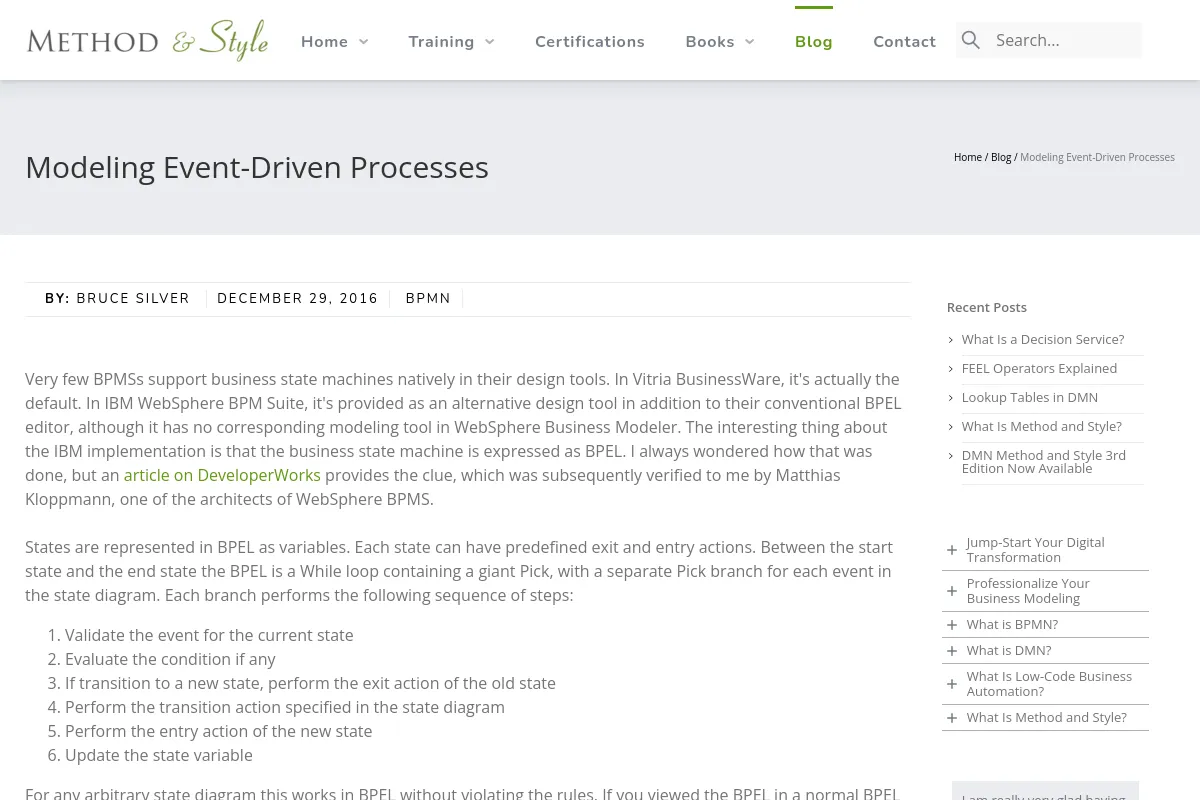Modeling Event-Driven Processes
Blog: Method & Style (Bruce Silver)
Virtually all the modeling notations and tools I know, including BPMN, as well as executable process design tools (both workflow-style and BPEL-based) follow the activity flow paradigm, i.e. like a flowchart or UML activity diagram, in which the flow is generally in one direction. Moreover, to create a valid executable process diagram, many (including the BPEL language itself) exclude arbitrarily looping back to previous steps in the diagram.
But for many real-world processes, particularly those characterized as "event-driven", that no-loopback rule doesn't work. They are better modeled as "business state machines," similar to a UML statechart diagram. Nodes in the diagram are not process activities but states of the process instance. In each state, the process listens for various events, which trigger a specified action (process activity) and transition to a new state (or back to the same state). The triggering can also be conditioned by a rule. This event-condition-action (ECA) paradigm is the hallmark of event-driven processes. UML provides a diagram to let system architects model them, but I don't know of any tools for process analysts to model them. Maybe the concept is too "complicated"?
